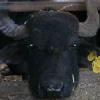-
Welcome to the eG Forums, a service of the eGullet Society for Culinary Arts & Letters. The Society is a 501(c)3 not-for-profit organization dedicated to the advancement of the culinary arts. These advertising-free forums are provided free of charge through donations from Society members. Anyone may read the forums, but to post you must create a free account.
Slow Food Diary -Study in Italy
-
Similar Content
-
- 827 replies
- 81,127 views
-
- 10 replies
- 267 views
-
- 2,292 replies
- 280,024 views
-
Food Ethics
By Duvel,
- 24 replies
- 1,398 views
-
- 688 replies
- 63,610 views
-
-
Recently Browsing 0 members
- No registered users viewing this page.





Recommended Posts